What Every DIY Bride Needs to Know About Designing a Cohesive Wedding
Introduction
Planning a wedding yourself is equal parts thrilling and overwhelming. You get to call the shots, choose the details, and pour your personality into every corner of the day. But with so many decisions—colors, flowers, décor, stationery, attire—it’s easy for things to feel mismatched.
Cohesion is the secret ingredient that makes a wedding feel pulled-together instead of pieced-together. It’s what transforms a collection of ideas into an experience your guests will remember for years. The challenge? Keeping all the moving parts aligned while juggling a budget, timelines, and your own creativity.
This guide breaks down how to design a wedding that feels harmonious from save-the-dates to the final dance. You’ll learn how to use tools like mood boards and timelines, avoid common pitfalls, and balance dreamy inspiration with practical steps.
Why Cohesion Matters More Than You Think
When all the elements of your wedding work together, you create a flow—visually, emotionally, and even logistically.
A cohesive wedding:
- Tells your love story through consistent visual cues.
- Makes photographs look timeless instead of dated.
- Feels more organized for guests (no mental whiplash from mismatched décor).
And here’s the kicker—cohesion doesn’t mean boring or rigid. You can still have quirky touches, but they should feel intentional, not accidental.
According to The Knot’s 2025 Real Weddings Study, couples are investing more in personalization than ever. When those personalized details are tied together with a consistent look and feel, the result is unforgettable.
Step One: Define Your Vision Early
It’s tempting to start booking vendors or buying décor the moment you see something you love. But pause. Before anything else, clarify your vision.
Ask yourself:
- What mood do you want to set? Romantic? Playful? Elegant?
- Which colors do you naturally gravitate toward?
- Are you inspired by a specific era, location, or season?
Your answers will guide every decision going forward—from vintage wedding invite ideas to table linens.
The Role of Mood Boards
A mood board is your wedding’s visual North Star. It keeps you from veering off-course when new inspiration tempts you.
Tips for building one:
- Choose 5–7 core images that represent your theme.
- Include textures and patterns, not just colors.
- Add snippets of stationery, attire, and floral styles.
Pinterest is great for this, but a physical corkboard or printed collage works just as well. The point is to have a reference you can revisit before making a purchase or signing a vendor contract.
Colors: More Than Just Pretty Hues
Color choices are one of the easiest ways to create consistency. They affect everything from bouquets to bridesmaid dresses to napkin folds.
Instead of picking one or two random favorites, build a palette of 4–6 complementary shades. This allows flexibility without sacrificing unity.
Pro tip: Choose one dominant color, two or three supporting tones, and one accent color. Use the accent sparingly so it pops without overwhelming.
Themes and Styles: Setting the Stage
Theme and style go beyond décor—they influence attire, music, and even menu choices. A rustic barn wedding feels different from a glam ballroom affair.
Popular DIY-friendly themes:
- Bohemian garden
- Coastal chic
- Vintage glamour
- Minimalist modern (yes, you can still keep it warm and personal)
Once you choose a theme, let it guide your decisions. For example, a bohemian garden wedding might feature mismatched chairs, loose floral arrangements, and soft lighting, while a vintage glamour vibe could include ornate custom wedding invitations and art-deco centerpieces.
Tools to Keep You Organized
Timelines
Timelines keep your vision on track and prevent last-minute chaos.
Your basic wedding timeline might include:
- 12 months out: Set budget, define vision, book venue.
- 9 months out: Secure photographer, florist, caterer.
- 6 months out: Order invitations, finalize menu.
- 3 months out: Confirm décor rentals, schedule dress fittings.
- 1 month out: Final guest count, seating chart.
Templates & Checklists
Templates—whether from wedding planning apps or printable PDFs—help you remember details that can slip through the cracks.
Look for templates that include vendor contact info, payment deadlines, and a master décor list. Having everything in one place saves you from panicked “where’s that note?” moments.
Digital Collaboration Tools
Since 68% of couples use Instagram or TikTok to find vendors, according to Axios, you might as well take advantage of digital tools to keep your vision organized, too. Google Drive folders, shared Pinterest boards, or Trello can keep everyone—bridesmaids, parents, vendors—on the same page.
Balancing Creativity with Practicality
Your wedding should feel like you. But it should also work for your guests, your budget, and your schedule.
Here’s how to strike that balance:
- Love elaborate centerpieces? Scale them down for guest tables but keep one showstopper for the head table.
- Want DIY elements? Choose ones that can be made weeks ahead, not the night before.
- Dreaming of a gourmet menu? Consider serving it family-style to save on staffing costs.
Remember: every creative decision has a logistical ripple effect.
Staying Organized Without Losing Your Mind
A disorganized bride is a stressed bride. And stress is the enemy of enjoying your big day.
Organization tips:
- Keep a binder (digital or physical) with contracts, receipts, and inspiration photos.
- Back up everything online.
- Assign tasks to friends or family who want to help.
- Schedule weekly 30-minute “wedding check-ins” to review progress.
Common Mistakes DIY Brides Make (and How to Avoid Them)
- Mixing too many styles
- Solution: Stick to your mood board. If something doesn’t fit, skip it.
- Underestimating costs
- According to Zola’s First Look Report, the average wedding in 2025 costs $36,000. Build a realistic budget and pad it by 10–15% for unexpected expenses.
- Leaving stationery to the last minute
- Invitations set the tone. Order them early, whether you’re going with elegant letterpress or playful DIY designs.
- Not thinking about photography needs
- With 57% of couples splurging on photographers (SaraDoesSEO), make sure your color palette and décor photograph beautifully.
- DIY overload
- Handmade favors? Lovely. Handmade linens for 200 guests? Maybe not.
Final Thoughts
Designing a cohesive wedding as a DIY bride isn’t about perfection—it’s about intention. When you start with a clear vision, use tools to stay organized, and balance creativity with practicality, you create a day that feels like an extension of your love story.
Remember: cohesion doesn’t limit your creativity. It gives it structure. And that structure is what turns a collection of pretty details into a day you—and your guests—will cherish forever.

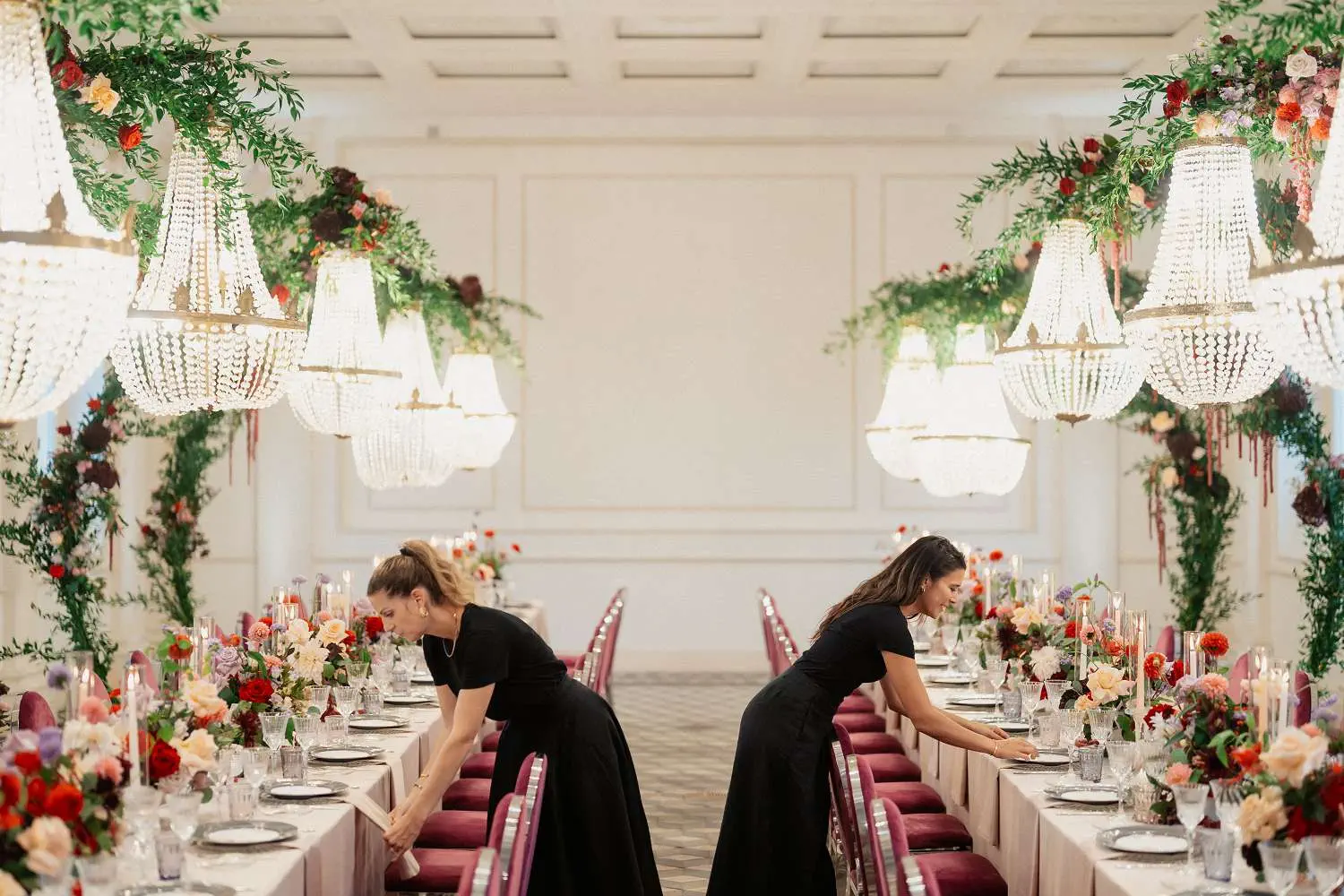
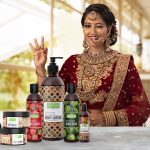

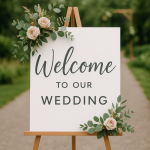
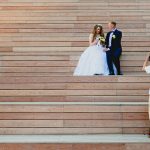

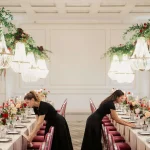
Leave a Reply